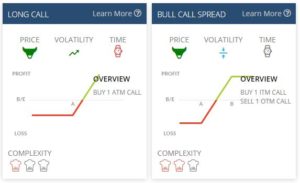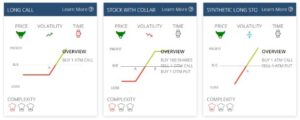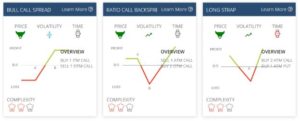How to make money in a bull market
A good Options trading system involves strategies that will work in bullish markets as well as bearish and sideways markets. For many investors, trading in a bull market can be seen as an ideal position, as there is the opportunity to buy stocks early and then sell them at a profit when they peak. However, trading in a bull market is not always as straightforward as it may sound and there is no one-size-fits-all strategy.
A bull market reflects a time where the market is on the rise and investors are confident that the upward trend can be sustained. By the simplest definition, it is likely that any loses during this time will be minor and temporary, but it is always a good idea to thoroughly assess the risks.
Most commentators define a bull market as a long period of time when stock prices have increased by 20% or more. Globally observed bull markets include the “dot-com bubble” in the late 1990s and the bullish run between 2003 and 2007 before the Global Financial Crisis (GFC). It can even be argued that there was a cryptocurrency bull market during late 2017, when bitcoin peaked over $USD 19,000 before falling by 65% by May 2018.
How to trade Options in a bull market
There are a range of different strategies which can be applied during a bullish market. Your strategy will be influenced by where you see the market moving between now and the expiry date on your position.

A ‘Long Call’ is one of the most simple bullish options trading strategies. A long call position is entered into by simply buying call contracts with the strike price ‘A’ shown above. You will initially pay a premium to enter this position. The value of the option contracts will increase the further the market rises above the strike price ‘A’.
A ‘Bull Call Spread’ is another popular strategy which is entered into by buying one in-the-money at strike ‘B’ call and selling one out-of-the-money call at strike ‘A’. Your maximum profit will be limited to the difference between strike A and B less the cost of the spread.
Another popular strategy is the Bear Put Spread. The position is entered into by buying one put contract at strike ‘A’, and selling one put contract at strike ‘B’. You will reach you maximum profit at strike ‘A’ and maximum loss at strike ‘B’. Compared to a long put strategy you will have a lower maximum profit but also a lower maximum loss.
A stock with collar is exactly what it sounds like – traders use this to protect themselves by buying underlyings of a particular stock while simultaneously buying protective puts against it, thus increasing the chance of winning in either scenario.
A synthetic Long Stock is often entered to try to simulate the payoff of a long stock position where the trader will buy at-the-money calls and selling the same number of at-the-money puts of the same underlyings.

A long strap is a strategy which consists of one put and two calls. Traders use it when they believe the underlying asset is going to move, but aren’t sure in which direction; while a Ratio Call Backspread is a good strategy for traders who believe the underlying stock will increase significantly. By combining purchases and sales, they create the optimal spread with limited loss potential and mixed profit potential.

To capitalise in bullish times it is important to remain as informed as you can, structure your own trading system in which you can remain profitable and set up strategies that will work in those conditions
*Trading options is not suitable for everyone. There is a risk that you can lose more than the value of a trade or its underlying assets. You should only trade if you are confident that you fully understand what you are doing. If you are thinking about acquiring a financial product, you should consult our Financial Services Guide (FSG) at www.reachmarkets.com.au and the relevant Product Disclosure Statement first.
General Advice Warning
Any advice provided by Reach Markets including on its website and by its representatives is general advice only and does not consider your objectives, financial situation or needs, and you should consider whether it's appropriate for you. This might mean that you need to seek personal advice from a representative authorised to provide personal advice. If you are thinking about acquiring a financial product, you should consider our Financial Services Guide (FSG) including the Privacy Statement and any relevant Product Disclosure Statement or Prospectus (if one is available) to understand the features, risks and returns associated with the investment.
Please click here to read our full warning.
